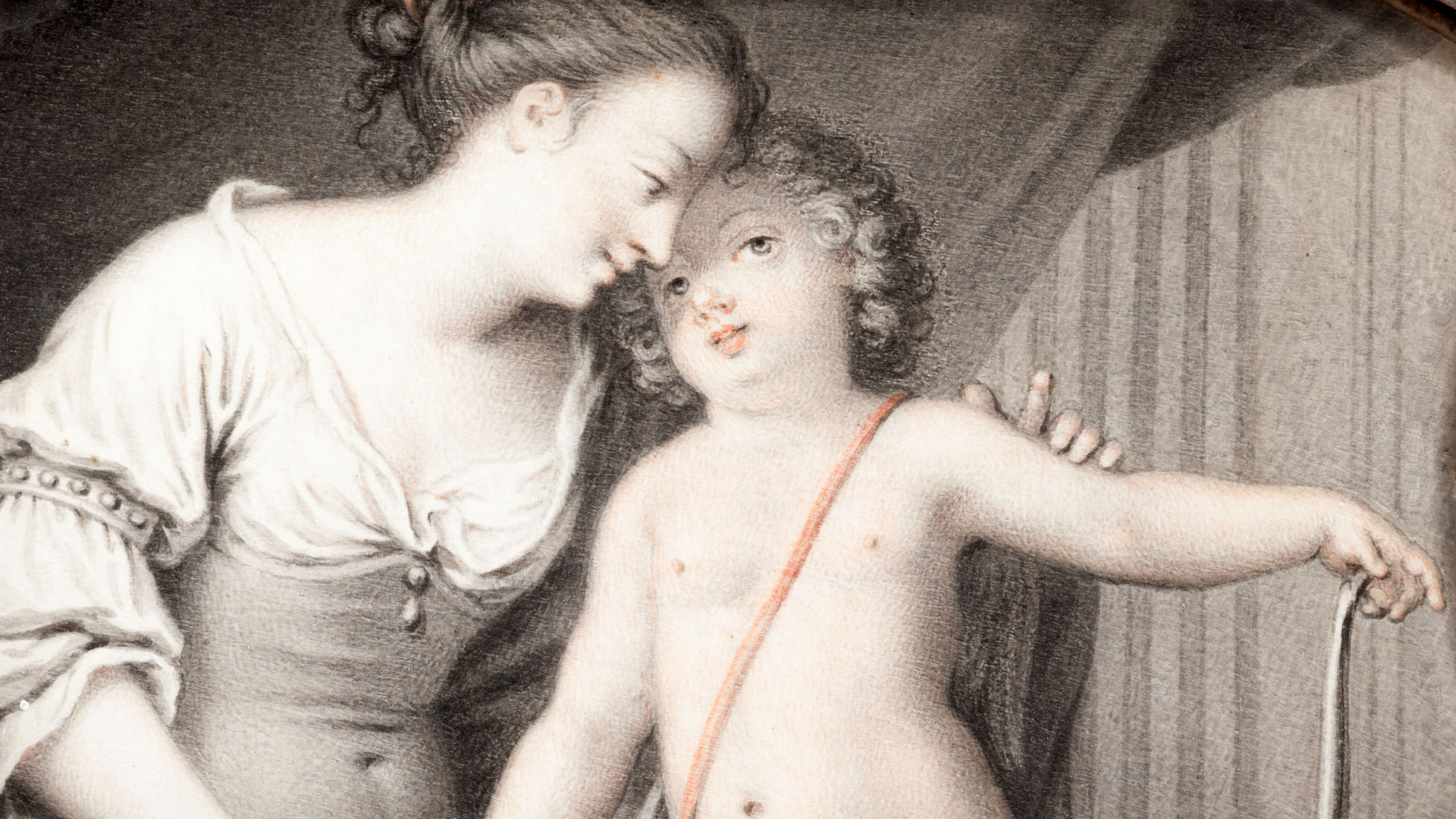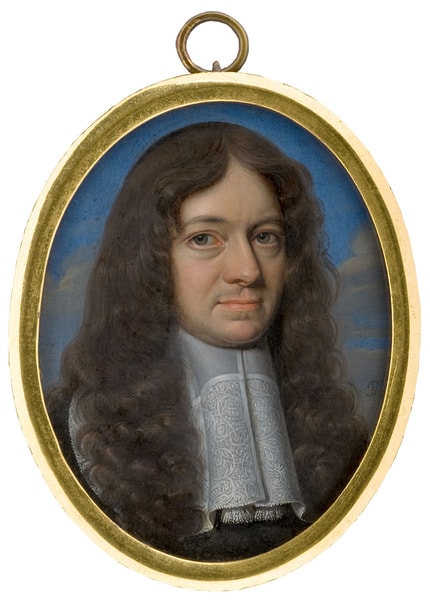
Baroque Period
Miniatures of the Baroque Period
The baroque period is a little known epoch in miniature painting. One reason for this is that relatively few works from the period exist, as small-format portraits were the preserve of society’s upper classes. In contrast to their successors, the artists creating these baroque portraits primarily emphasised the rank, wealth and superiority of their sitters. They occasionally used symbols whose meanings are not immediately obvious to today’s observers.
A new art form
At the beginning of this period, the miniature portrait was still a new art form. In the early 16th century, it developed out of mediaeval manuscript illumination and into an independent form of representation. Towards the end of the 16th century, there was a first pinnacle of development in England, led by Nicholas Hilliard, Isaac Oliver and his son Peter. In the 17th century, England continued to shine as the leader in miniature portraits. Here Samuel Cooper set the stylistic and technical tone and reached a level of achievement that delights us even today. Only gradually did the miniature portrait gain a foothold in France. However, given the lack of signed works it is difficult to identify the artists. In France style was determined by the court of Louis XIV. Following its lead, other European courts also attempted to promote the art of miniature painting. On German territory it was raised to a very high level in Berlin, Dresden and Düsseldorf, while in Denmark Copenhagen blossomed into a centre of miniature portrait painting. After the Edict of Nantes was revoked and many craftsmen specialised in watchmaking fled from France, miniature painting – first and foremost the technique of enamelling – also flourished in Geneva.
We know only a relatively small number of the artists who painted miniatures at that period. One reason for this is that at that time most painters did not sign their works – the exception being English artists – and it is difficult to attribute unsigned pieces. In any case, the existence of a signature does not indicate the quality of a miniature, and here and there the anonymous items include a masterpiece..

Franciszek Smiadecki: Gentleman with long curls, inv. no.: 10681 read more...
Hierarchical social order and dignity
In the 17th century it was primarily rulers and members of the aristocracy who commissioned miniature portraits. They had their portraits painted in the smallest format to give as presents to friends and family, but also to demonstrate their rank to other courts or to express their loyalty to them. Like large-format portraits, miniature portraits of this time reflected the hierarchical social order. For the high-ranking clients it was indeed important to be recognisable, but the crucial aspect was to demonstrate the sitter’s social standing. An elevated rank was illustrated by the pose and facial expression and underlined with clothing and accessories. The painters compiled a kind of repertoire of poses, articles of clothing and hairstyles, which they showed to the client and from which he or she could choose. This explains why many portraits have a similar concept with little individuality. Men selected for their miniature portraits, alongside the obligatory allongé wig, either a bright red or bright blue coat and draped a long cloak over their shoulders, or else they were shown as army commanders, usually in impressive armour. In contrast, the ladies drew attention to themselves with complicated hairstyles involving artificial hairpieces. They were shown in costly dresses with deep necklines and lace edging, often also with a cloth around their shoulders. Strings of large pearls and pearl hair clasps were popular items of jewellery. Large pearl drop earrings were also a typical “fashion accessory” of the time.
A large variety of painting techniques
Most miniatures in the Baroque period were executed in watercolour on fine parchment called vellum, a technique that was already in common use in mediaeval manuscript illumination. But away from protective books, the delicate works needed shielding against damage and were therefore covered with glass. This tradition was not abandoned until the early 18th century, when thin sheets of ivory became established as the painting support. A great technical leap forward came with the use of enamel to paint miniatures. The brilliant colours and high durability fascinated artists and clients alike. But the clients also valued the technique for its exclusivity: enamel miniatures demanded that the artist have special knowledge and great skill in order to handle the complex production process. Yet at that time miniature portraits were also still being painted in another, quite different technique – in oil paints on thin metal plates. This type of painting was similar to the large-format painting on wooden panels and was therefore familiar to painters with traditional training. Meticulously executed paintings rich in detail were a speciality of Dutch artists of the “Golden Age”. It therefore comes as no surprise that some of them also painted oil miniatures.